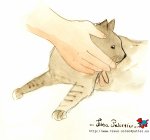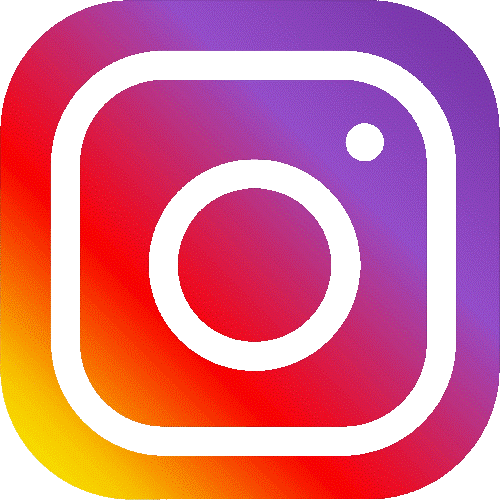A young 4 month old dachshund is seen in consultation for locomotion difficulties.
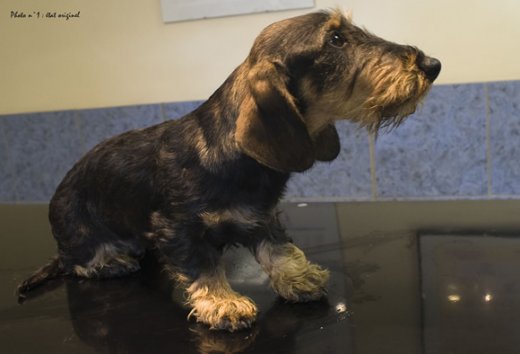
He’s had a stooping back for a few days and would rather sit down. Nevertheless, his behaviour (feeding, playing, etc.) remains unchanged. His owner brings him regularly to another veterinarian and the dog is well vaccinated and worm dosed. The food is also well adapted. In order to avoid taking non steroidal anti inflammatory drugs, the dog is being sent for an osteopathic visit.
Classic general examination is good, even though the dog sits quietly on the consultation table (picture 1). The osteopathic examination reveals several dysfunctions, including for the most important ones: dysfunction of the sacra-iliac joint, the thorax-lumbar junction and the left maxillary bone. The left maxillary dysfunction leads us to investigate for teeth anomalies: a deciduas canine is badly implanted (picture 2). It is then decided to try, exclusively at first, an osteopathic treatment which is done right away, by classical myotensive and fascial technique, in respect of the dog young age.
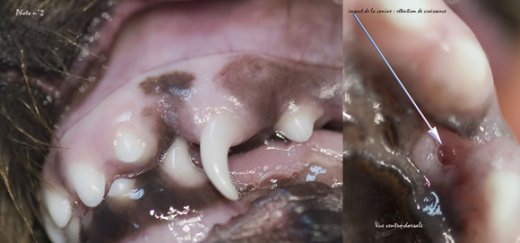
The animal is seen two weeks later with an absolute identical dysfunctional organisation! The left inferior canine tooth is then withdrawn (picture 3) before starting again the osteopathic treatment.
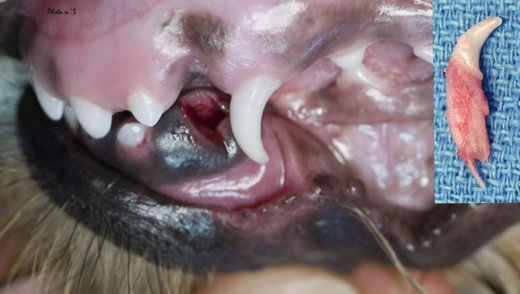
The control visit after three weeks reveals a dog who is standing perfectly (picture 4) and from whom dysfunctions have disappeared.
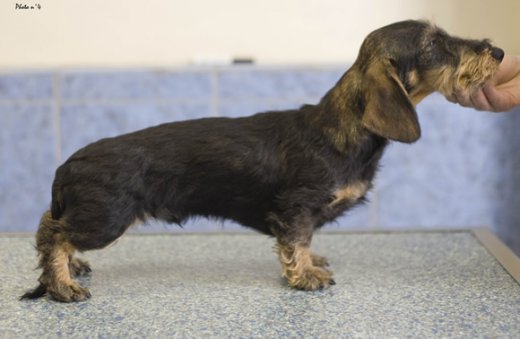
This clinical case underlines the significance of teeth implantation while a dog is growing. The veterinarian, too often, only treats the badly implanted tooth by extracting it or by using more complex orthodontia techniques if they are more indicated. He should not forget the fundamental link between skull growth and general growth. The fascial and conjunctival relation which connects the whole body needs systematically a global approach of the animal. By neglecting it, the practitioner leaves the animal in a tense situation which will interfere with the growth and lead to unperfected bio-mechanical structures, and though potentially pathological ones.
Here again, the osteopathic techniques allow regulation of morbid dysfunctions, often, well before usual image analysis actually point them out. It is then imperative not to leave out this stage towards our patients recovery.
